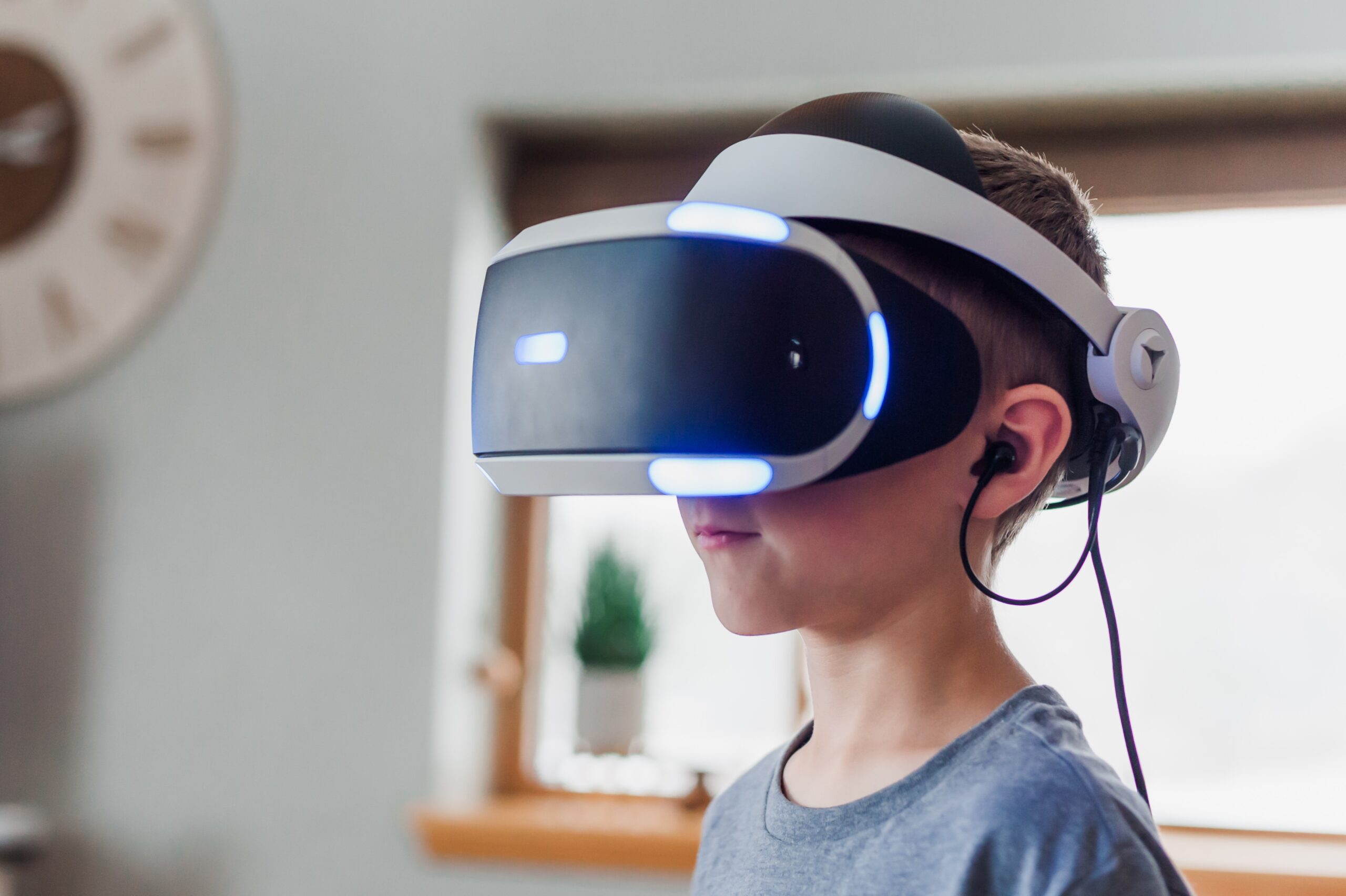How virtual reality technology is transforming the way children receive healthcare—dental care included!
The dental clinic can be an intimidating environment at times for little ones: the unfamiliar environment, the machinery, and the strange feelings of dental tools and someone’s big fingers in the mouth can cause children to feel overwhelmed. Those with sensory aversion due to developmental disorders like ADHD or autism may experience additional discomfort with the process.
Emerging research on Virtual Reality (VR) Technology is a way to help meet the sensory needs of children receiving various forms of healthcare. But first, what exactly is VR?
Virtual Reality is an immersive experience that may require a headset to completely replace a user’s surrounding view with a simulated, immersive, and interactive virtual environment. VR is sometimes coupled with Augmented Reality (AR) technology that overlays “simulated digital imagery with the real world”. Those who have caught Pokemon on your Iphones would know what we are talking about!
The combination of both technologies is being increasingly incorporated into aspects of medical practice, in areas such as rehabilitation therapy, pre-surgery planning, and notably, pediatric diagnostics and treatment.
VR works well with pediatric care as children often do not understand the scope of their treatment and are resistant to receiving it. The technology can help patients go through the motions of the procedure in the virtual world before actually receiving treatment, or even provide such an immersive experience that patients feel less overwhelmed by the sensory overload of the procedure itself. For instance, VR can help filter out noise during an MRI scan.
Studies have also found specific use of VR in dentistry as well. Researchers have found that VR systems were effective at “reducing discomfort and pain for patients with mild to moderate anxiety” within a dental context. This study found that when wearing VR headsets, children aged four to six were able to receive primary tooth extractions more smoothly than without.
Other applications of VR technology include its use during social cognition training to help young adults with high-functioning autism process interpersonal dynamics and social information.
One example of VR technology currently in use includes Reimaginewell, which provides virtual reality headsets specifically for use in healthcare settings. Reimaginewell’s VR technology is geared toward pediatric patients; for example, a child can use their VR program to get comfortable with taking an MRI scan experience before actually the actual scan itself.
Dr. Phoebe Tsang’s office is exploring this type of technology and hopes to be able to implement them in the near future: stay tuned for new developments!
Leave a reply

